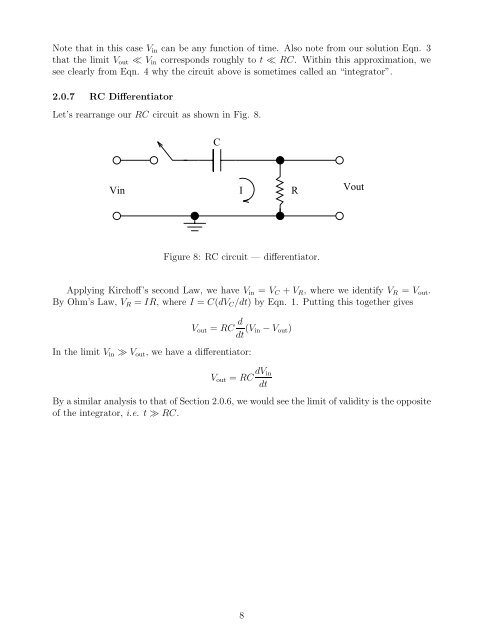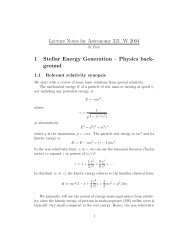Lecture Notes for Analog Electronics - The Electronic Universe ...
Lecture Notes for Analog Electronics - The Electronic Universe ...
Lecture Notes for Analog Electronics - The Electronic Universe ...
Create successful ePaper yourself
Turn your PDF publications into a flip-book with our unique Google optimized e-Paper software.
Note that in this case Vin can be any function of time. Also note from our solution Eqn. 3<br />
that the limit Vout ≪ Vin corresponds roughly to t ≪ RC. Within this approximation, we<br />
see clearly from Eqn. 4 why the circuit above is sometimes called an “integrator”.<br />
2.0.7 RC Differentiator<br />
Let’s rearrange our RC circuit as shown in Fig. 8.<br />
Vin<br />
C<br />
I<br />
Figure 8: RC circuit — differentiator.<br />
R<br />
Vout<br />
Applying Kirchoff’s second Law, we have Vin = VC + VR, where we identify VR = Vout.<br />
By Ohm’s Law, VR = IR,whereI=C(dVC/dt) by Eqn. 1. Putting this together gives<br />
Vout = RC d<br />
dt (Vin − Vout)<br />
In the limit Vin ≫ Vout, we have a differentiator:<br />
Vout = RC dVin<br />
dt<br />
By a similar analysis to that of Section 2.0.6, we would see the limit of validity is the opposite<br />
of the integrator, i.e. t ≫ RC.<br />
8













